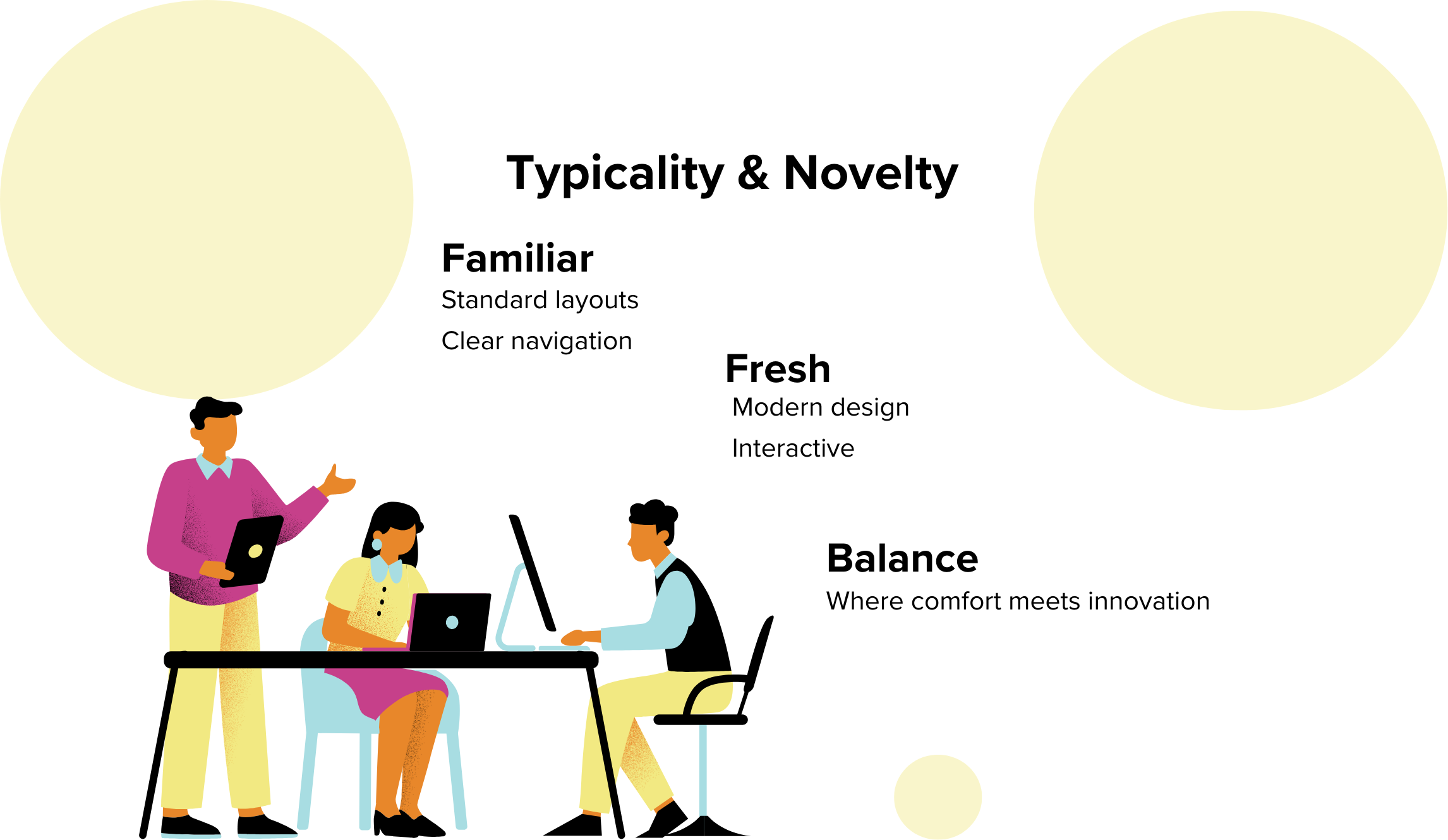Evidence-based design in digital presentations combines user expectations and creativity to produce a powerful and approachable experience. This idea is rooted in the industrial design notion of "MAYA" (Most Advanced Yet Acceptable), which was first proposed by Raymond Loewy in 1951. According to the Maya principle, the most effective designs strike a balance between novelty and typicality, giving people a familiar yet unusual experience.
Evidence-based design guides the integration of contemporary, interactive web-based experiences with conventional presentation styles in digital presentations, such as those created by platforms like RELAYTO. Users' expectations, which have been influenced by years of exposure to both dynamic websites and structured papers, are met by this equilibrium.
Typicality and Novelty's Place in Design

Particularly in digital contexts, typicality describes recognizable design elements that users anticipate from experience. For example, certain norms have been established through years of interaction with static documents and traditional PDF presentations. By maintaining components that users naturally comprehend, like readable text, dependable layouts, and intuitive navigation, typicality captures this.
Contrarily, novelty entails presenting fresh attributes, designs, or capabilities that attract the user's attention and provide a better or more distinctive experience. Although users value new designs, they are more likely to interact with them if they fit into well-known patterns. This interaction between novelty and typicality is crucial.
The Benefits of Combining Microsites and Presentations
.png)
A digital presentation that blends the best features of microsites and traditional presentations can strike a potent balance between typicality and originality. Compared to traditional presentations, websites are frequently more interactive and visually appealing and convey information in ways that digital audiences are becoming more accustomed to.
These platforms enable features that draw attention and offer a distinctive user experience, including responsive layouts, interactive elements, and multimedia integration. The experience is anchored by standard presentation components, such as a straight flow of information and well-structured chapters, which give it an approachable and well-organized feel.
In order to give users the depth of a presentation and the interaction of a website, RELAYTO, for instance, uses multi-chapter presentation/document formats supplemented by web-based UX design concepts. The end result is a digital product that appeals to people's need for the "most advanced yet acceptable" looks while feeling both novel and pleasantly familiar.
The Significance of Evidence-Based Design
.png)
According to Google Research, it is crucial to design with an awareness of user expectations that are influenced by regular online interactions. The same rule applies when creating proposals or presentations that are seen by customers: a PDF may seem too rigid and predictable, whereas a very creative website may appear confusing or overdone. The evidence-based design makes use of these findings to produce user flows, features, and layouts that are both engaging and intuitive.
Author 
The fastest way to build digital experiences. We empower businesses to convert PDFs, presentations and other content into interactive experiences & webpages with instant branding, analytics & more.